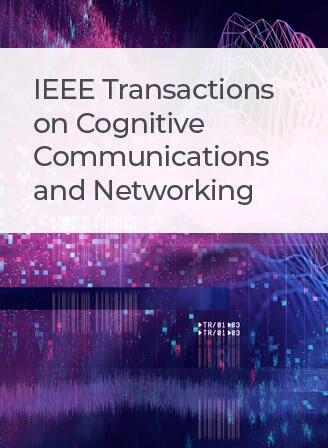Spectrum Resource Allocation Based on Cooperative NOMA With Index Modulation
IF 7.4
1区 计算机科学
Q1 TELECOMMUNICATIONS
IEEE Transactions on Cognitive Communications and Networking
Pub Date : 2020-04-30
DOI:10.1109/TCCN.2020.2991426
引用次数: 16
Abstract
In this paper, two novel spectrum resource allocation schemes, based on orthogonal frequency division multiplexing with index modulation (OFDM-IM) and dual-mode OFDM-IM, are proposed for a three-node cooperative non-orthogonal multiple access (C-NOMA) system. In the first scheme, we allocate IM bits to serve the cell-edge user, and save the transmit power to assist the delivery of constellation symbols. Alternatively, constrained by the spectral efficiency (SE), the rest information bits of the cell-edge user can be carried by the conventional signal constellation. In the second scheme, to further eliminate the interference between users and boost the SE, different modulation modes (Mode I and Mode II) are employed to distinguish the subcarriers of the cell-center and cell-edge users, and to encode the incoming bit stream from these users, respectively. Furthermore, we consider two different detectors for the cell-edge user, i.e., the optimal/suboptimal maximum-likelihood detectors. Asymptotically tight bounds on the bit error rate of the above-mentioned users are derived in closed-form. Finally, simulation results verify the theoretical analysis and show that the proposed schemes have the potential to outperform C-NOMA.基于索引调制协同NOMA的频谱资源分配
针对三节点合作非正交多址(C-NOMA)系统,提出了基于正交频分复用索引调制(OFDM-IM)和双模OFDM-IM两种新的频谱资源分配方案。在第一种方案中,我们分配IM位来服务蜂窝边缘用户,并节省发射功率来辅助星座符号的发送。或者,受频谱效率(SE)的限制,蜂窝边缘用户的其余信息位可以由传统的信号星座携带。在第二种方案中,为了进一步消除用户之间的干扰并提高SE,采用不同的调制模式(模式I和模式II)来区分蜂窝中心用户和蜂窝边缘用户的子载波,并分别对来自这些用户的传入比特流进行编码。此外,我们考虑了两种不同的蜂窝边缘用户检测器,即最优/次最优最大似然检测器。以封闭形式导出了上述用户误码率的渐近紧界。最后,仿真结果验证了理论分析,表明所提方案具有优于C-NOMA的潜力。
本文章由计算机程序翻译,如有差异,请以英文原文为准。
求助全文
约1分钟内获得全文
求助全文
来源期刊

IEEE Transactions on Cognitive Communications and Networking
Computer Science-Artificial Intelligence
CiteScore
15.50
自引率
7.00%
发文量
108
期刊介绍:
The IEEE Transactions on Cognitive Communications and Networking (TCCN) aims to publish high-quality manuscripts that push the boundaries of cognitive communications and networking research. Cognitive, in this context, refers to the application of perception, learning, reasoning, memory, and adaptive approaches in communication system design. The transactions welcome submissions that explore various aspects of cognitive communications and networks, focusing on innovative and holistic approaches to complex system design. Key topics covered include architecture, protocols, cross-layer design, and cognition cycle design for cognitive networks. Additionally, research on machine learning, artificial intelligence, end-to-end and distributed intelligence, software-defined networking, cognitive radios, spectrum sharing, and security and privacy issues in cognitive networks are of interest. The publication also encourages papers addressing novel services and applications enabled by these cognitive concepts.
 求助内容:
求助内容: 应助结果提醒方式:
应助结果提醒方式:


